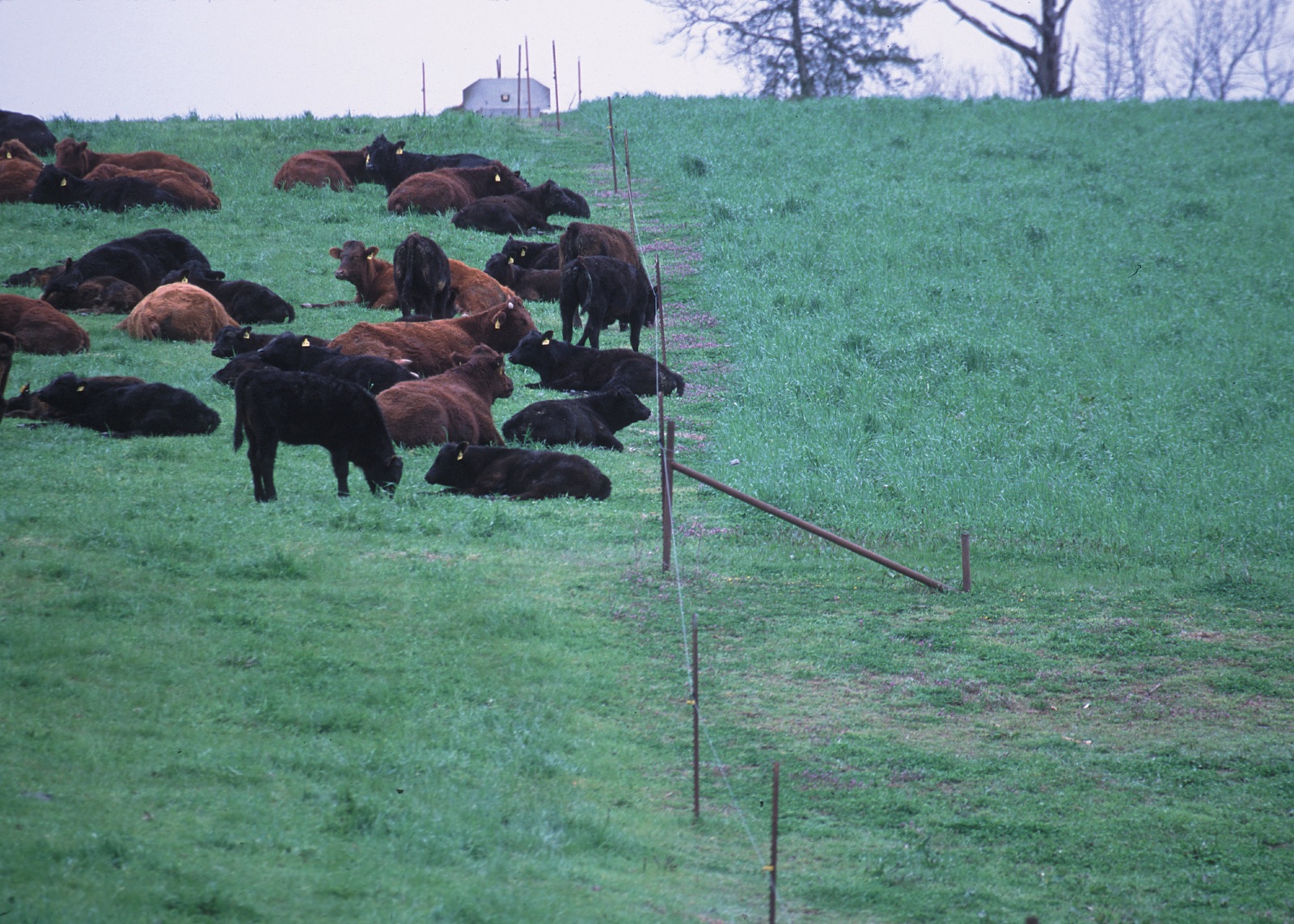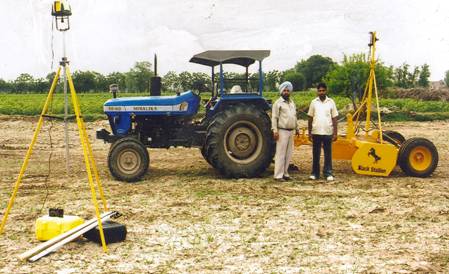-
Download:
My Results |
All BMPs
Hydrodynamic Structures
Category: Detention
Practice Type: Structural
Climatic Zones: Temperate
Regions: North America
Pollutants Treated: Nitrogen, Phosphorus, Sediment
N Efficiency1: 5%
P Efficiency1: 10%
S Efficiency1: 10%
Description: Hydrodynamic structures are generally underground devices devices designed to improve water quality of stormwater. These structures use features such as swirl concentrators, grit chambers, oil barriers, baffles, micropools, and absorbent pads to remove sediments, nutrients, and other pollutants from stormwater runoff. 2
Implementation Considerations: Devices are generally proprietary and may not be economical for large runoff volumes. Hydrodynamic structures provide no habitat value.
Scalable to small farms? No
1 "Documentation: Source Data, BMP Effectiveness Values." Chesapeake Assessment Scenario Tool. Web. 2013. http://casttool.org/Documentation.aspx .
2 Estimates of County-level Nitrogen and Phosphorus Data for Use in Modeling Pollutant Reduction Documentation for Scenario Builder Version 2.2." Chesapeake Bay. Dec. 2010. Web. May 2013. http://archive.chesapeakebay.net/pubs/SB_V22_Final_12_31_2010.pdf.
Practice Type: Structural
Climatic Zones: Temperate
Regions: North America
Pollutants Treated: Nitrogen, Phosphorus, Sediment
N Efficiency1: 5%
P Efficiency1: 10%
S Efficiency1: 10%
Description: Hydrodynamic structures are generally underground devices devices designed to improve water quality of stormwater. These structures use features such as swirl concentrators, grit chambers, oil barriers, baffles, micropools, and absorbent pads to remove sediments, nutrients, and other pollutants from stormwater runoff. 2
Implementation Considerations: Devices are generally proprietary and may not be economical for large runoff volumes. Hydrodynamic structures provide no habitat value.
Scalable to small farms? No
1 "Documentation: Source Data, BMP Effectiveness Values." Chesapeake Assessment Scenario Tool. Web. 2013. http://casttool.org/Documentation.aspx .
2 Estimates of County-level Nitrogen and Phosphorus Data for Use in Modeling Pollutant Reduction Documentation for Scenario Builder Version 2.2." Chesapeake Bay. Dec. 2010. Web. May 2013. http://archive.chesapeakebay.net/pubs/SB_V22_Final_12_31_2010.pdf.
Infiltration Basins/Trenches
 Infiltration basin to collect the rainwater of a factory in Herdecke. Photo courtesy of Raenmaen, Wikimedia commons.
Infiltration basin to collect the rainwater of a factory in Herdecke. Photo courtesy of Raenmaen, Wikimedia commons.
Practice Type: Structural
Climatic Zones: Temperate, Tropical
Regions: North America
Pollutants Treated: Nitrogen, Phosphorus, Sediment
Description: An infiltration basin or trench is a depression where sediment is trapped and water infiltrates the soil. No underdrains are associated with infiltration basins and trenches, because by definition these systems provide complete infiltration. The trenches and basins reduce stormwater runoff.1
Implementation Considerations: Design calculations must be done by a qualified engineer familiar with hydrology and hydraulics. This practice will have detailed design standards for slope, velocity, infiltration rates, width, residence time, manning n value, maintenance, pipe placement, soil amendments, and various other design elements. Infiltration basins and trenches are most effective when constructed on good soil types.
Scalable to small farms? No
1 Simpson, Thomas, and Sarah Weammert. "Developing Best Management Practice Definitions and Effectiveness Estimates for Nitrogen, Phosphorus and Sediment in the Chesapeake Bay Watershed." Chesapeake Bay Program. Dec. 2009. Web. June 2013. http://archive.chesapeakebay.net/pubs/BMP_ASSESSMENT_REPORT.pdf.
Integrated Plant Nutrient System (IPNS)
 Cover Crop Combination Used to Improve Soil Health. Photographer: Scott Bauer. Photo Courtesy of USDA NRCS.
Cover Crop Combination Used to Improve Soil Health. Photographer: Scott Bauer. Photo Courtesy of USDA NRCS.
Practice Type: Management
Landuse/Agriculture Type: Rice, Row Crop, Small Grains
Climatic Zones: Temperate, Semiarid, Tropical
Regions: North America, Europe, Africa, South Asia
Pollutants Treated: Nitrogen, Phosphorus, Sediment
Description: IPNS aims at reducing the amounts of fertilizer applied to fields and increasing the fertilizer use efficiency by adopting the best time, rate, method and source of application in addition to emphasis conserving and improving soil health. IPNS emphasizes using commercial fertilizer in balance with natural fertilizers--such as organic manure, green manures (e.g. conservation cover crops), crop rotation with legumes, crop residues and bio-fertilizers--to meet part of the nutrient needs of crop and cropping systems. 1
Implementation Considerations: Some barriers to adoption have been identified, especially for small, low-income landholders. Barriers include, need to use livestock manure for fuel, lack of extension services and training on implementation of IPNS, higher labor costs associated with IPNS, and no access to green manure seeds.
Scalable to small farms? Yes
Scaling Considerations: and see FAO document above as well
1 A.K. Nayak, B. Lal, Mohammad Shahid, B.B. Panda, R.Tripathi, R. Raja, and T. Mohapatra. Indian Journal of Fertilizers., (2013). Fertiliser Best Management Practices in Rice for Higher Productivity. Volume 9 (4), pp. 54-66; Rhaman et al 2007
Intensive Rotational Grazing
 Intensive grazing system where cattle have grazed for 3 weeks on the left side of the fence and will be moved to the other side after a 3 week grazing rotation. Benton, Arkansas.Photographer: Jeff Vanuga. Photo Courtsey of USDA NRCS
Intensive grazing system where cattle have grazed for 3 weeks on the left side of the fence and will be moved to the other side after a 3 week grazing rotation. Benton, Arkansas.Photographer: Jeff Vanuga. Photo Courtsey of USDA NRCS
Practice Type: Structural, Management
Landuse/Agriculture Type: Pasture
Climatic Zones: Temperate, Semiarid, Tropical
Regions: North America, Europe
Pollutants Treated: Nitrogen, Phosphorus, Sediment
Description: Intensive rotational grazing is a variation of rotational grazing where the pasture is divided into more than seven paddocks with grazing periods of less than one week to as little as one-half day. There is more control of what the animal eats, and typically, better growth and persistence of pasture plants. When managing an intensive rotational grazing system, it is important to remember that the stocking rate is very high within one paddock and that overgrazing can occur very rapidly. Animals must be moved when the available pasture falls below its optimum range. To maintain milk production levels, you may need to remove highly productive dairy animals from paddocks before the plants prior to grass height falling below the optimal range. Rotational grazing improves the quantity and quality of forage, thereby reducing soil erosion, increases infiltration, and reduces runoff. As a result soil and nutrient losses are minimized.1
Implementation Considerations: Ability to implement a rotational grazing system will depend on stocking rates and available pasture. Intensive rotational grazing requires active management and investment in fencing and water systems to create the paddocks.
Scalable to small farms? No
1 "Pastures: Grazing Management." Penn State Extension: College of Agricultural Sciences. Web. July 2014. http://extension.psu.edu/agronomy-guide/cm/sec8/sec810l .
Laser Land Leveling
Category: Erosion Control
Practice Type: Structural
Landuse/Agriculture Type: Rice
Climatic Zones: Tropical
Regions: South Asia
Pollutants Treated: Nitrogen, Phosphorus, Sediment
Description: Laser Land Levelling is a levelling technique used for achieving very fine levelling with desired grade on the agricultural field. This practice is generally used in rice cultivation. This technique of precision land leveling using laser land leveler has proved to improve rice yields and input use efficiency including water and nutrients. 1
Implementation Considerations: Requires specialized equipment? Labor?
Scalable to small farms? No
Scaling Considerations: Laser leveling requires investments in firms or agencies that can provide lasers and heavy machinery.
1 R.K. Shrama, R.S. Chhokst, S.C. Gill, S.C. Tripathi and Indu Sharma. Indian Journal of Fertilisers., (2013). Fertliser best management practices in wheat for higher productivity. Volume 9 (4), pp. 70-78
Practice Type: Structural
Landuse/Agriculture Type: Rice
Climatic Zones: Tropical
Regions: South Asia
Pollutants Treated: Nitrogen, Phosphorus, Sediment
Description: Laser Land Levelling is a levelling technique used for achieving very fine levelling with desired grade on the agricultural field. This practice is generally used in rice cultivation. This technique of precision land leveling using laser land leveler has proved to improve rice yields and input use efficiency including water and nutrients. 1
Implementation Considerations: Requires specialized equipment? Labor?
Scalable to small farms? No
Scaling Considerations: Laser leveling requires investments in firms or agencies that can provide lasers and heavy machinery.
1 R.K. Shrama, R.S. Chhokst, S.C. Gill, S.C. Tripathi and Indu Sharma. Indian Journal of Fertilisers., (2013). Fertliser best management practices in wheat for higher productivity. Volume 9 (4), pp. 70-78

